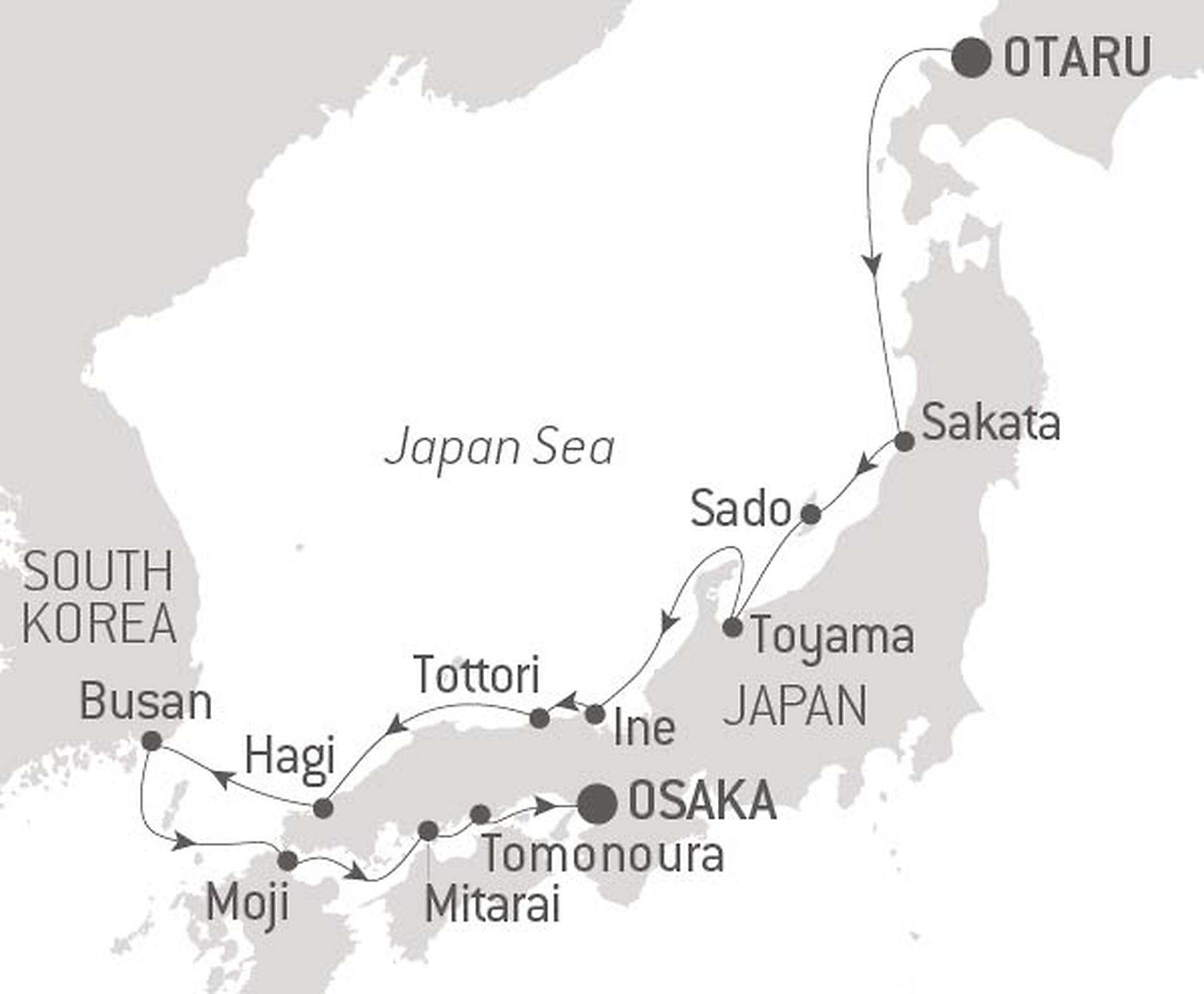Description
Set sail and discover the Empire of the Rising Sun, its many traditions and emblematic sites. From Otaru, you will set off on an all-new 12-day cruise in the footsteps of the mid-18th-century Japanese merchants , who travelled the Kitamae maritime route to Osaka every year.
First of all, you will visit the north of the island of Honshu and, more specifically, the charming city of Sakata. Long known as a prosperous town in the western part of the Tohoku region, it will captivate you with its folkloric atmosphere, with authentic and traditional architecture, still retaining the scents, flavours and certain traditions of the time of Kitamae.
You will then sail to the small island of Sado, renowned for its magnificent coastline, wild landscapes and rich history, which blends maritime and artistic traditions with vestiges of the gold rush.
Then, in Toyama, a charming city backing onto the Tateyama mountain range, you will take the Kurobe Tateyama alpine route for a voyage above the clouds. This will be the opportunity to cross the ‘Yuki no Otani’, an impressive route cut under more than fifteen metres of snow. At the summit of this magical route, you will be struck by an exceptional panorama overlooking what are known as the Japanese Alps.
After exploring the traditional village of Ine and its bay, the port of call in Tottori will seem like the unexpected interlude of your cruise. With good reason, since this ancient, fortified town is home to Japan’s largest sand dunes. Bright sunshine, ochre dunes edged by the Sea of Japan, camels with a captivating gait… Here, in this majestic landscape where wind waves rise to caress the sand giants, time seems to stand still.
Le Soléal will set sail, on the island of Honshu, to Hagi, the cradle of the samurai and Hagi ware. This town will win you over with its narrow streets, traditional houses, and the former residences of Japanese warriors from this feudal town, whose mythical Shizuki Castle, erected in the 17th century, emerges as a symbol.
Then you will sail to South Korea, a small peninsula that juts out into the Sea of Japan, and discover Busan, South Korea’s second city. A place of great contrasts, Busan offers a spectacular view over its port, as well as over the ancient district of Chalgachi.
Back in Japan, you will set out to discover Moji, on the northern tip of the island of Kyushu. In the past a strategic site for maritime trade with China, this stunning city of picturesque little streets will enthral you with its preserved architectural heritage evoking the traditional Japan of the Meiji era and the end of the 19th century. From the top of the Mojiko Retro Observation Room, you will be able to enjoy an exceptional panorama, a poetic combination of shinto sanctuaries and captivating maritime landscapes.
After a trip aboard one of our zodiac inflatables, in the traditional fishing village of Mitarai, you will head to Tomonoura, known for its gentle way of life and its craggy landscapes that inspired the animator Hayao Miyazaki for the animated film Ponyo.
Your cruise will end in Osaka, the last stopover on the Kitamae route, now a modern, forward-looking city, nestling right in the heart of the Japanese archipelago.


















